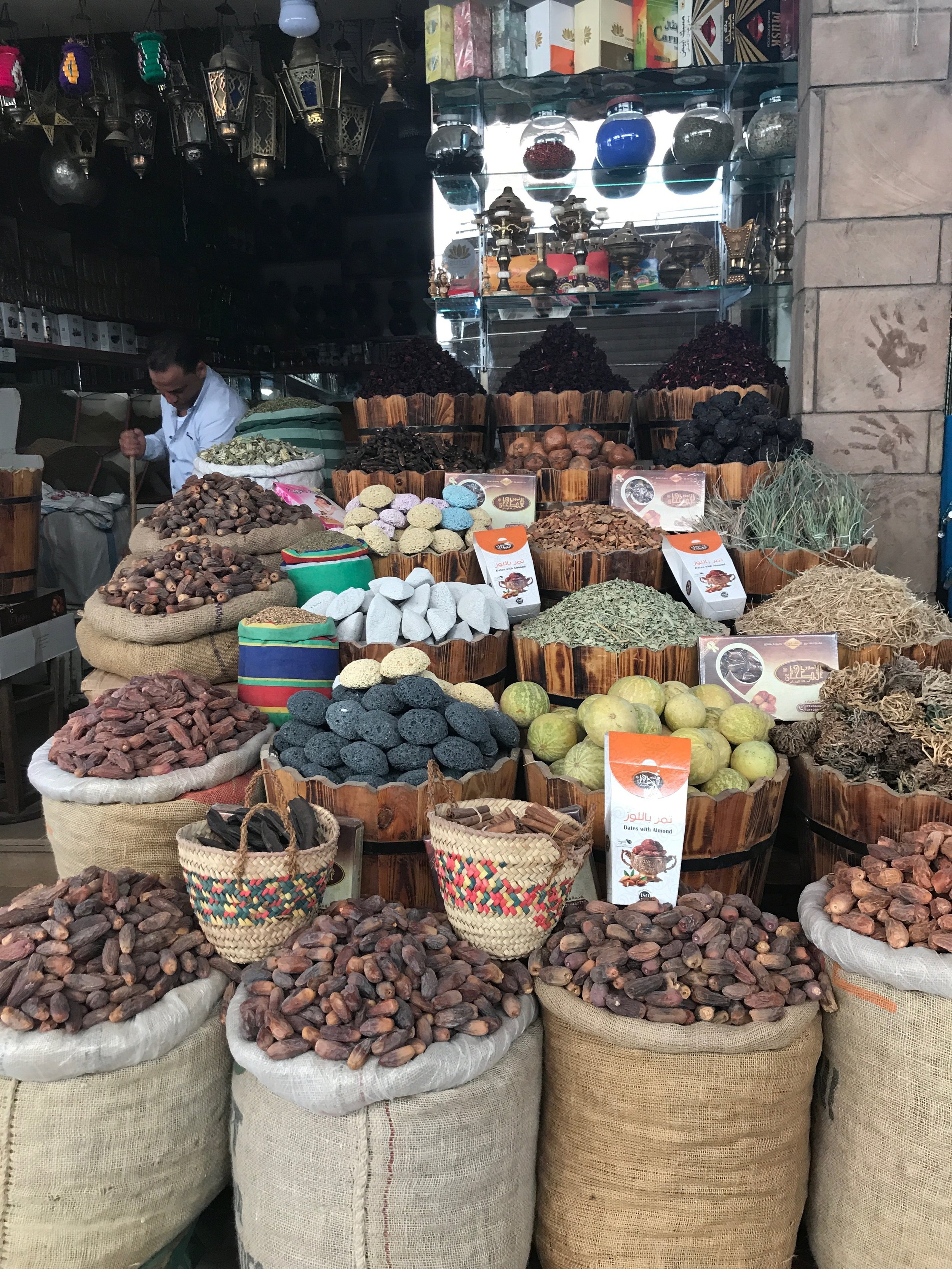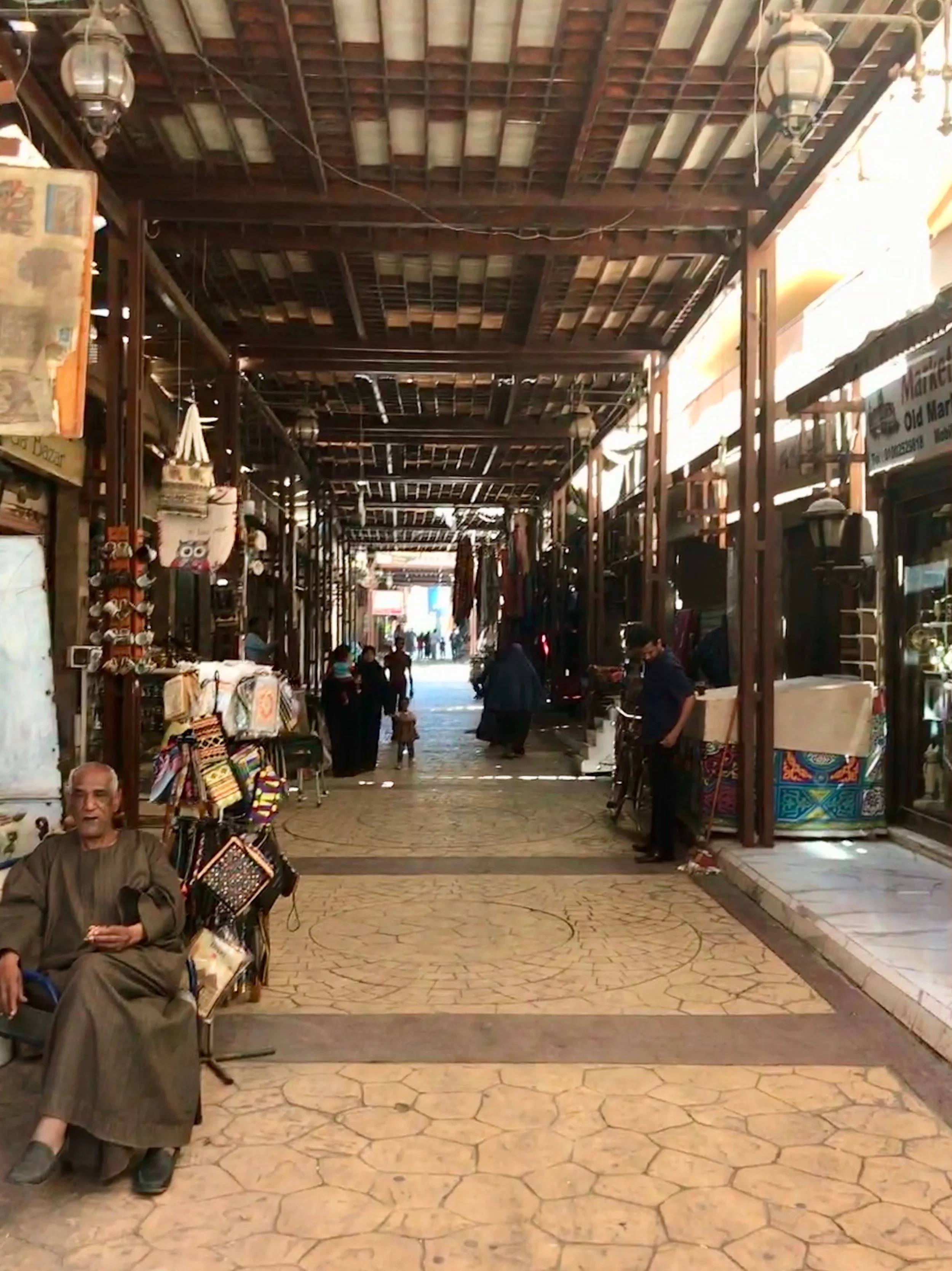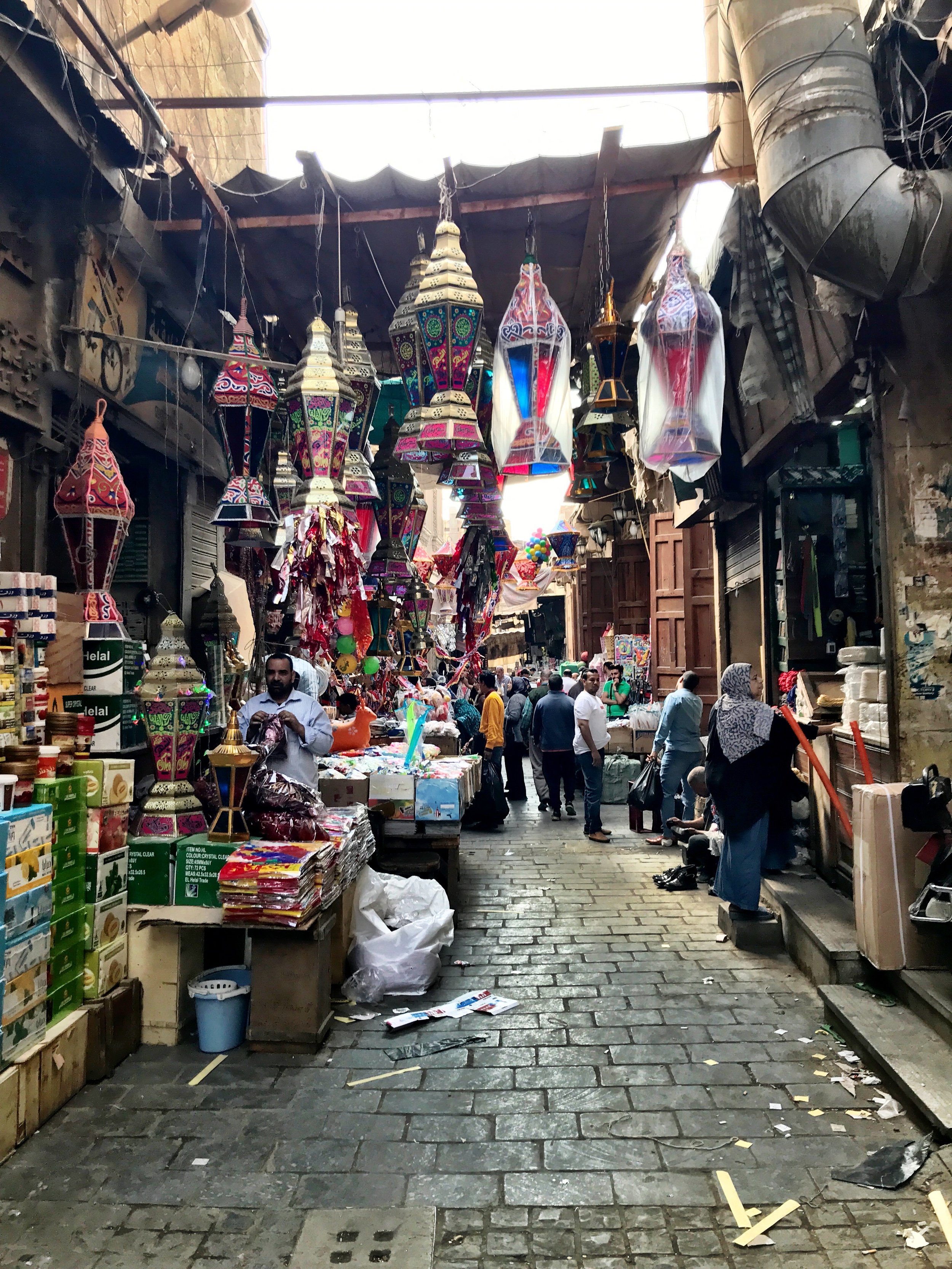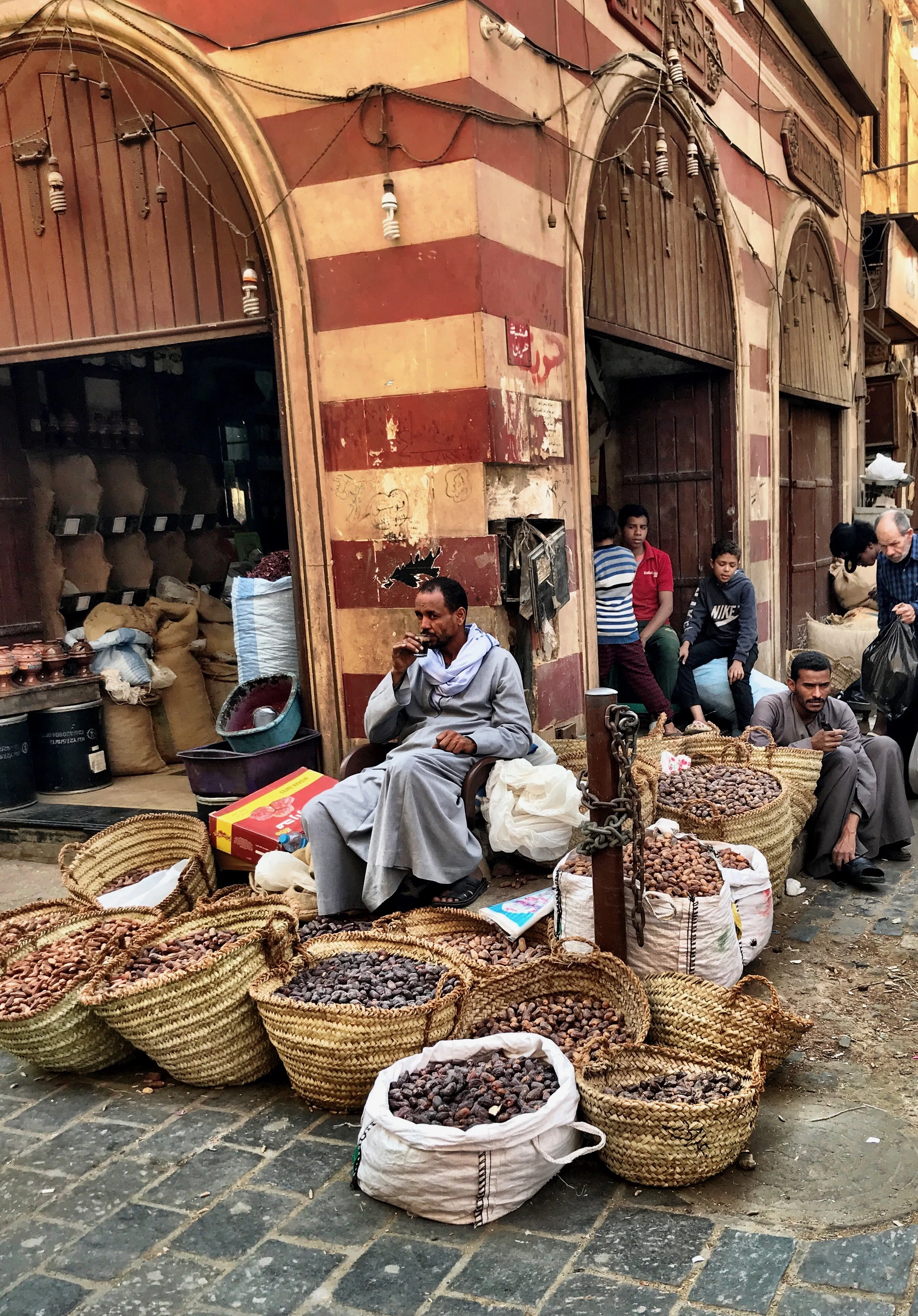Whether you’re hitting the Khan el-Khalili or the Luxor souk, here’s what to expect — and how to get the best bargains.
A lot of the handicrafts in Egypt are cheap-looking — probably cuz they were made in China
Zeina had warned us — but we didn’t heed her advice. She owned the hotel we stayed at in Luxor, and would make the rounds at dinner, stopping by the tables to chat.
We asked her about good shopping in Luxor, and she said if we wanted handicrafts we should head to the souk.
“We weren’t 50 feet inside the Luxor airport before we were detained. ”
She pleaded with us to resist buying anything that even remotely resembled an antique, launching into a tale about how the model Kate Moss and someone from Christian Dior had stayed at her hotel last week, and even though they had a private plane, they were delayed two days because something they had purchased at a shop below the Winter Palace hotel looked like it might be a relic.
Cotton candy becomes an artistic medium at Khan el-Khalili in Cairo
Aside from the odd street vendor, this is the only food you’ll find at Khan el-Khalili. There aren’t any cafés — just coffeeshops, where the most you can ingest is shisha (hookah) smoke
The next night, it was someone else who bought something at the same shop, who also had a private plane, but this poor gentleman had been sleeping at the police station for three nights while an expert took their sweet time checking the authenticity of the item.
Afterward, Duke and I smiled at each other. Zeina seemed to be a storyteller. And I’m OK with that. I’ve never let the truth get in the way of a good story. And I figured there was an underlying morale to her tales, a warning we shouldn’t ignore.
The Luxor Souk has one main drag — and some good finds
“I nodded agreeably. I knew he was lying and he knew I knew; we were playing the time-honored game of mercantile duplicity, in which both parties profess the most noble sentiments while each plans to cheat the other as thoroughly as possible.”
The Luxor Souk
We arrived at the souk relatively early, around 10:30 a.m. Because it was a Sunday (Easter, to boot), all of the Coptic Christian stalls were closed. Apparently there are a lot of Coptics in Luxor.
We had just entered the bazaar when I spied a shop I knew would appeal to me and Duke.
And sure enough, once we were inside, we started putting items aside: a stone Anubis head as well as a faded blue baboon statue head, a worn-looking blue ushabti servant figurine and other items you could imagine had just been dug out of the desert after being hidden away for centuries.
In other words, we were doing exactly what Zeina had told us not to do. But we couldn’t help ourselves; old-looking shit is our passion.
In less than 10 minutes, Duke and I had piled a dozen pieces onto the table.
A good portion of stalls are shut on Sunday at the Luxor Souk, since the Coptic Christians are at church
It was tough to gauge how much all of these should cost, but we had heard people calling out very low prices at the bazaars you have to walk through before leaving every temple you visit. (Exit through the gift shop.)
So when the vendor said, “$360,” I acted sad and a little disgusted and muttered, “That’s way too high. This is our first shop of the day. We’ll keep going and come back.”
“OK, OK,” the shopkeeper said, laying a hand on my shoulder to prevent me from leaving. “What’s your price?” I was aiming for $50, while Duke quietly said he’d be good with $75.
So I typed 45 on the calculator, to give myself the slightest bit of wiggle room, and the man countered with $150.
“Let’s go,” I told Duke. My famous walk-away ploy.
Again, I was stopped by a hand on the shoulder. “What’s your lowest price?”
“$50,” I said.
“You are tough,” the man said to me. Then, like a predator sizing up the weakest prey, he turned to Duke in a flash. “What’s your final offer?”
And I stood there in a daze as Duke said, “$150.”
“What happened to $75?!” I exclaimed.
But it was too late. Once you agree to a price it’s poor form to then back off.
I shook my head in dismay. But Duke hadn’t done any real shopping the entire trip, and I think he was suffering withdrawal.
The bazaars are a bit of a maze and can get quite claustrophobic
Motorbikes whizz through the souk — as it got dark, one almost ran right into Duke!
How to Get Detained at the Airport
I told the shopkeeper about my fear that we’ll be detained at customs. He laughed it off but said he’d give us documentation. So before we left I reminded him of this, and he scribbled some Arabic on the back of his business card. He told us he had written that we had bought 13 items that were reproductions. We put that into our bag, along with the receipt.
And sure enough, we weren’t 50 feet inside the Luxor airport before we were detained. We had put our bags through security, and the guard said, “Statues?” and called us off to the side.
We spent the next 30 minutes (which felt like an eternity) uncomfortably watching the man slice into the carefully wrapped items, opening them for a woman in a headscarf who scratched at them with a paperclip and held a lighter to them. She always lit them near the top, but I didn’t feel it was my place to suggest she try the back or base instead.
Every time she burned a section, she’d smell it and, without fail, would rear her head back, her nose scrunched up, obviously having smelled something unpleasant — namely, the synthetic materials used in the (all-too-convincing) replicas. But every time she’d grimace at the smell, a wave of relief washed over me.
In the end, she had taken notes on our items, copied down my passport number, then set us free to pack up the wreckage and go on our merry way.
A vendor sips Turkish coffee at Kahn el-Khalili souk in Cairo
How Not to Bargain
I was upset with Duke for having caved under the pressure — especially since it was the second time it had happened on the trip.
Despite our better judgement, we had decided to go to an alabaster shop suggested by our guide. In Egypt they’ll suggest alabaster, papyrus and perfume “factories.” At these shops, they’ll show you the creation process (which is actually quite fun), all the while insisting there’s no pressure to buy.
Of course that’s not true. After the demonstration, you’ll be ushered inside and served up a drink (I went for Turkish coffee), a salesperson hovering nearby.
We had decided to get some small flint canopic jars, the four containers in which Ancient Egyptians would place certain organs during the mummification process. I had played hardball, insisting on a low price; the salesman got frustrated, and pounced on Duke like a cobra, waving me away.
The man had started at the absurd price of $65 apiece, and Duke caved at $125 for all four.
As a rule, it’s best to avoid these types of tourist traps, and a good guide won’t pressure you to go to them. (They get a commission or some small payment for luring in unsuspecting victims.)
But you will hear the depressing refrain, “Everything in the souk is made in China,” so perhaps those type of stores are one of your only guarantees of quality materials and handcraftsmanship.
The charming Linda at her Luxor shop, Habiba Gallery
Habiba: The Best Shop in the Souk
If you’re in Luxor and want locally made handicrafts, you have to stop into Habiba Gallery, a darling shop Zeina had recommended, just off of the main street of the souk, toward the Nile and the ruins of Luxor Temple. It’s run by a friendly Aussie named Linda, who has lived in Egypt for 20 years. Her mission is commendable: She only sells items that are indigenous to regions where they’re made. Some whimsical plates with gorgeous trees and serving dishes with a goat’s head and tail were part of a project for children to try their hand at pottery after school. Now two of those kids have grown up and started a business, which is now one of Linda’s suppliers.
The selection at Habiba is amazing — we just kept adding more and more to our pile, including a handwoven hammam towel, scented soaps, a veiled doll with silver bangles, a framed piece of jewelry and a cloth with a local village scene woven onto it.
The best part is that the prices are fixed and totally fair. Take a break from haggling and stop in for a chat with the charming Linda. You’ll come away with some great finds — whether you give them as gifts or keep them for yourself. –Wally





























